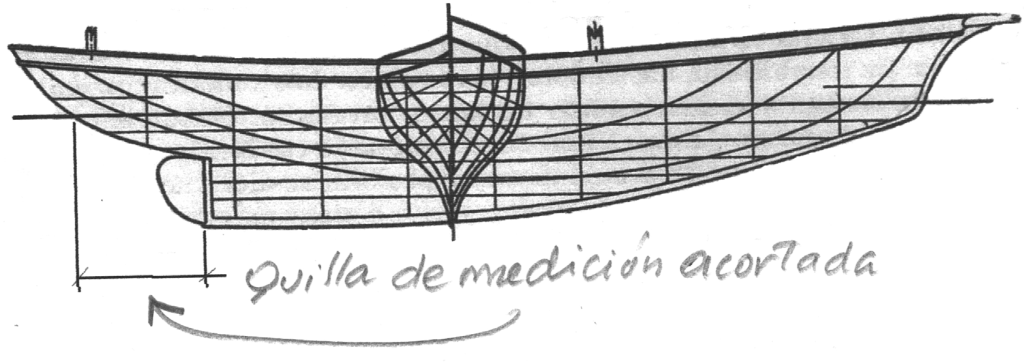Published in Gaceta Nautica, by Juan José Merayo of Incidence Sails Palma
From the first moment that two sailboats sailed on the same course, the competition began, to arrive first with the cargo to port or just for the pleasure of making fun of the neighbour, be it your brother-in-law or the Prince of Naples. Then came the eternal argument that your boat is bigger, that it is lighter, has more sails and as a consequence, for the race to be even, you have to give advantages to the smaller boat, the germ of handicaps.
Measurement Formulas and Handicaps
It is my opinion and I have survived many such as L.I.S. (Long Island Sound) C.C.A. (Cruising Club of America) I.O.R. (International rating Rule) IRC, metre rule and many other local rules in America and Europe, that the different measurement formulas that have been used throughout the ages to establish advantages and disadvantages that determine the speed of a boat with respect to other boats, rating, is the cause that the sailboats and rigs are the way they are. This is not to the detriment of the designers, not at all, who with their ingenuity and technical skills have produced yachts that were better suited to the formula and were also fast and safe. Not every time. When it comes to establishing why a boat has more or less beam, has one mast or two, the onus is on the designer but the formula used at the time will have a lot to do with his decisions.
The purpose of any measurement formula is to allow yachts of different sizes to compete fairly together, because barring unforeseen circumstances, the larger yacht (and/or an owner willing to put up a lot of money) would have the advantage, sometimes even then they don’t win.
Origins of Measurement Formulas
The famous Qeen ́s Cup race between the schooner America and 14 British yachts around the Isle of Wight in 1851 for the Hundred Gold Guineas Cup, as it was called up to that time, comes to mind.
Due to disqualifications, groundings and collisions, the unflappable Brits were eliminated one by one, without so much as a justifiable swear word, leaving only the smaller yachts and the tricky to manoeuvre topsail schooners, which took 45 minutes to tack, to compete against the untimely and misaligned Yank.
In the end, the 170-ton America came in first, but was followed by the 47-ton cutter, Aurora, which crossed the finish line only 8 minutes later. If there had been any kind of fair, any kind of handicap system in racing, by tonnage, length or whatever, today’s sailors would be racing for the Aurora Cup this year, not the America’s Cup.
Narrowing the Beam

JULLANAR, 1875, the first to beat the system.
Early attempts to create qualification rules were based on the old British tonnage measurement system, which was created in the Pleistocene era to calculate the tonnage volume of large commercial sailing ships. It was based on the carrying capacity of the ship in tons (at 35 cubic feet per ton) or, as some believe, in ‘tunes’ (barrels of wine), it is possible that yachtmen were always known to be drinkers. Of course, the sailing area was not included, nor were credits given for less efficient rigs, so naturally, the racing field was dominated by cutters. Eventually, this rule was modified in 1854 as the Thames Measurement Rule: Tonnage = ((L-B) x B x .5B)/94. Where L is keel length and B is maximum beam). But rigging and sails were still ignored and the measurement of draught was eliminated. An easy way to overcome this rule was to shorten the keel measurement, and E. H. Bentall, the first early pioneer of this rule, was the first to do so. H. Bentall, the first advance man, found the hole in the formula and did this with Jullanar’s design in 1875 by moving the rudder radically forward. As a result, Jullanar received a lower rating, won more races than her fair share and was the first to break the rules. Because beam was such an important factor in the rule, another way to reduce the rating was to make the yachts narrower and narrower. Jullanar was certainly slim, but the rule eventually resulted in phenomena like «Oona», with a beam of 1/6 of her waterline. Attempts were made to encourage a wider beam by the Yacht Racing Association Rule of 1881, ((L + B) and sup2 x B)/1730, but the Oona, designed in 1884 by the famous G. L. Watson, another ingenious discoverer of holes, was 11.60 length, 1.75 m beam, 1.90 draught, and carried 153 m2 of sail! …. a legitimate edged board.

